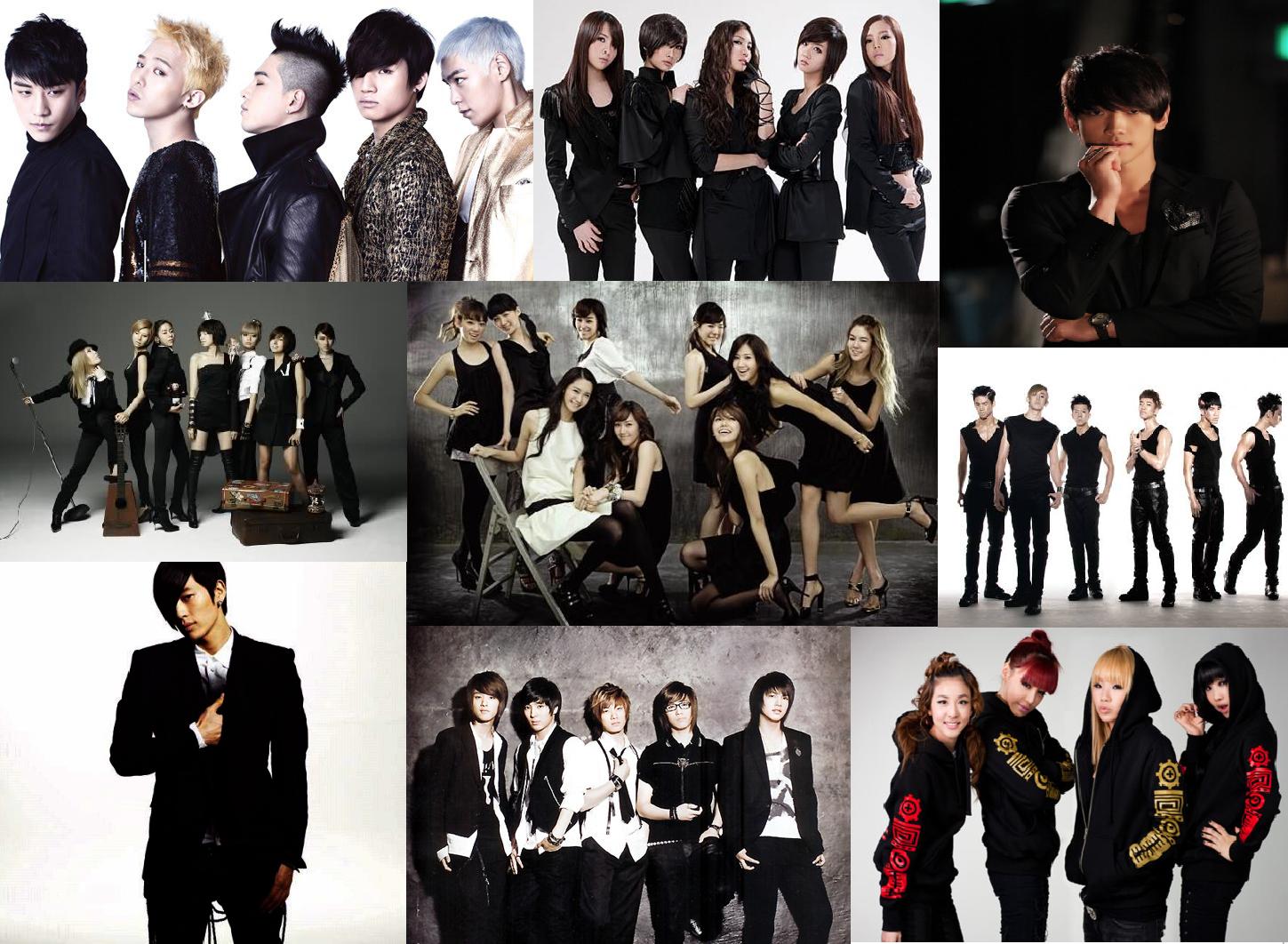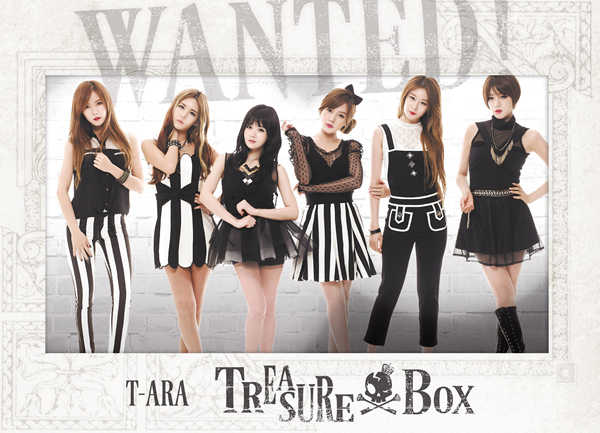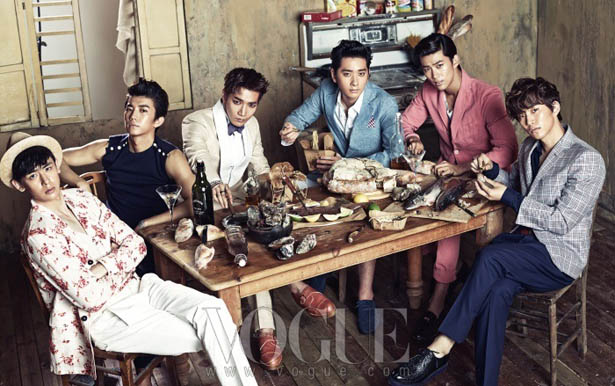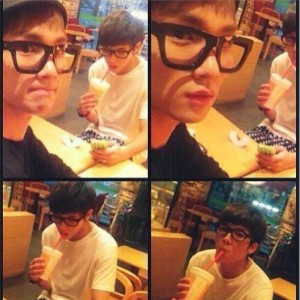 “People know what they do; frequently they know why they do what they do; but what they don’t know is what what they do does.” – Michael Foucault
“People know what they do; frequently they know why they do what they do; but what they don’t know is what what they do does.” – Michael Foucault
There are two ways of understanding this quote – Either you read it five to six times and have your “aha!” moment (I speak from experience) or you read the following:
Everything you do is a political act, its importance varying according to contexts. As long as your act bears consequences, it can and will be deemed political, be it personal political or public political. Hence, nothing can be deemed irrelevant irrespective of your intention. The thought in itself is quite burdening but in a highly politicized world where even this goes on, it’s an inescapable responsibility.
The fact that you breathe the air you do is a political act in itself. And if any of you just stopped breathing to prove that, you have escaped that political responsibility, then congratulations you rebel, you just committed a political act of defiance. I am stretching this a bit too far but that is just to convey the point that every individual is a product of power and therefore their actions automatically become political. YOU are damn important and so are your acts.
Which is why so-called simple shows like Teletubbies can create political furore, as deceptively issueless concepts can have strong political connotations. They are all products of their (un)intended ideology and their (un)tapped political potential.
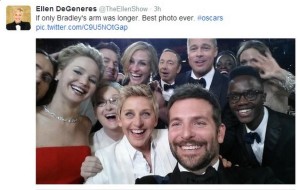 Having set the premise of this article, let’s move on to appreciating that wonderful moment during the Oscar’s night when Ellen DeGeneres snapped the most amazing and most retweeted selfie ever. I don’t know what was more exciting – the fact that Angelina Jolie skipped to the frame, or that Jared Leto barely made it, or the sheer diversity in the selfie – I remain fascinated and confused. But the glorification of the selfie did lead to righteous indignation after all; our idols are far more skilled and advanced in taking splendid selcas (Oxford, you ignored the vocabulary of the masters while creating your dictionary) which made me wonder: What’s in a selca?
Having set the premise of this article, let’s move on to appreciating that wonderful moment during the Oscar’s night when Ellen DeGeneres snapped the most amazing and most retweeted selfie ever. I don’t know what was more exciting – the fact that Angelina Jolie skipped to the frame, or that Jared Leto barely made it, or the sheer diversity in the selfie – I remain fascinated and confused. But the glorification of the selfie did lead to righteous indignation after all; our idols are far more skilled and advanced in taking splendid selcas (Oxford, you ignored the vocabulary of the masters while creating your dictionary) which made me wonder: What’s in a selca?
The selca, or the self captured image, has been the subject of ridicule and intense criticism with allegations of narcissism, self-absorption, and rampant objectification, irrespective of gender, being hurled at it relentlessly. However, most selca producers and consumers seem unfazed by the negative hype around it, and continue being part of the revolution. And for good reason.
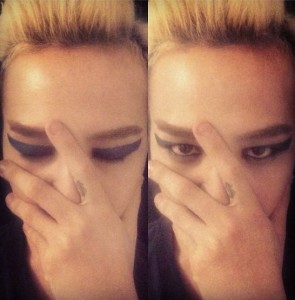 Despite all its drawbacks, the selca plays a major role in the act of self-fashioning. The selca becomes a self-portraiture; an unspoken but impactful introduction: “Hello, I am the picture,” as opposed to the Facebook revolution’s “Hello, there is a teeny weeny possibility that I am the picture.” And this introduction is authored only by the author; there is no external force (aka the nosy photographer, the dominant gaze) compelling you to tilt your head, to smile wider, or to just stand upside down. You are the sole definer of the ‘good’, the ‘bad’, and the ‘ugly’ as you gaze at yourself through the detached gaze of the camera.
Despite all its drawbacks, the selca plays a major role in the act of self-fashioning. The selca becomes a self-portraiture; an unspoken but impactful introduction: “Hello, I am the picture,” as opposed to the Facebook revolution’s “Hello, there is a teeny weeny possibility that I am the picture.” And this introduction is authored only by the author; there is no external force (aka the nosy photographer, the dominant gaze) compelling you to tilt your head, to smile wider, or to just stand upside down. You are the sole definer of the ‘good’, the ‘bad’, and the ‘ugly’ as you gaze at yourself through the detached gaze of the camera.
This act of self-fashioning becomes easier and excitingly experimental when our K-pop idols take to clicking pictures because unlike us peasants, who also tend to seek recognition and more importantly, validation often by internalizing the discourse of objectification, our K-idols don’t need that sort of validation as they are Instagram trendsetters themselves. As the West’s reigning selfie king, James Franco, once said: “It (celebrity selca) has value regardless of the photo’s quality, because it is ostensibly an intimate shot of someone for whom the public is curious about.” In such a situation, the idol selcas will be a definite hit but the difference lies in making an impact, in coming out as the person with the best story.
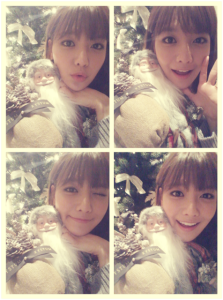 Telling a story through a picture is one tough job after all, how much can you fit in a frame? K-idols don’t only have to tell a story but their narrative needs to end at a cliffhanger to perpetuate the mystery surrounding an idol without appearing too uptight. Simply put, their selca story needs to initiate a discourse amongst fans, to create an excited buzz, only then can a selca make it to the Hall of Idol Awesomeness.
Telling a story through a picture is one tough job after all, how much can you fit in a frame? K-idols don’t only have to tell a story but their narrative needs to end at a cliffhanger to perpetuate the mystery surrounding an idol without appearing too uptight. Simply put, their selca story needs to initiate a discourse amongst fans, to create an excited buzz, only then can a selca make it to the Hall of Idol Awesomeness.
How does an idol create a selca story?
One popular way of creating a selca story is by taking the quadrant selca. Usually this selca has the idol showing different expressions in four different quadrants, and these in itself add up to making a narrative. However, such a selca does not evoke discussion. It’s one of those selcas which you ‘like’ and forget. To create a memorable selca, an idol needs to make full use of space and property. What could define the self better than how you choose to use your space and things you own (or don’t own).
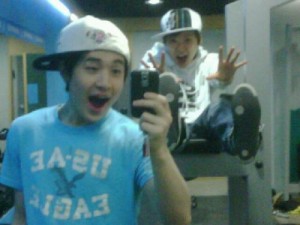 Amber is an interesting example of self-defining and story-telling selca. Being one of the few female idols, who blends seamlessly in girl groups and boy groups, her androgynous identity gives her a leverage in the selca business. The selca with Henry conveys a companionship and comfort not seen usually in other interactions of male and female idols. The space used is not at all alien to them as they don’t restrict themselves to standing, but fool around, experimenting with it. The minimalist clothing and no make-up faces further strengthen the idea that they are well-bonded.
Amber is an interesting example of self-defining and story-telling selca. Being one of the few female idols, who blends seamlessly in girl groups and boy groups, her androgynous identity gives her a leverage in the selca business. The selca with Henry conveys a companionship and comfort not seen usually in other interactions of male and female idols. The space used is not at all alien to them as they don’t restrict themselves to standing, but fool around, experimenting with it. The minimalist clothing and no make-up faces further strengthen the idea that they are well-bonded.
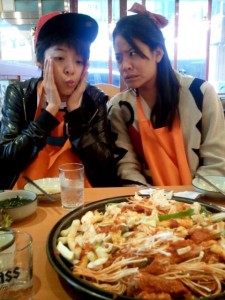 Goofball remains a goofball as evident in her selcas with her sister and her sister seems to be in tune with Amber’s eccentricity. The pictures have the two sisters posing but it gives a vibe that the selca is just an exaggeration of what happens in reality; fans are comforted by the fact that they are not being fed lies, just exaggerated truths.
Goofball remains a goofball as evident in her selcas with her sister and her sister seems to be in tune with Amber’s eccentricity. The pictures have the two sisters posing but it gives a vibe that the selca is just an exaggeration of what happens in reality; fans are comforted by the fact that they are not being fed lies, just exaggerated truths.
Amber is also known to experiment with her androgynous identity in selcas by slipping into heels or wearing a wig participating unknowingly in a liberating performance of gender and sexuality, creating happy pandemonium across all fandoms. Therefore, Amber creates a selca story worth circulating and remembering, avoiding falling into the trap of generic selcas, coming off as approachable and relatable at the same time.
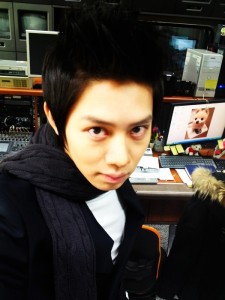 If there is another androgynous idol making judicious use of selcas, then it has to be Heechul. With him, the dynamic of selca story-telling changes for instead of creating an identity, Heechul uses the selca to assert his “no-nonsense (until its my nonsense)” attitude. He does not exploit the “come hither” look but instead looks straight back at the camera, burning the lens if it were possible. Self-confidence and straight-forwardness ooze from his selcas. He has his quirky side (He is Heechul, for god’s sake!) but his gaze keeps on reasserting the fact that for all his humour and eccentricity, he is not one to be taken lightly.
If there is another androgynous idol making judicious use of selcas, then it has to be Heechul. With him, the dynamic of selca story-telling changes for instead of creating an identity, Heechul uses the selca to assert his “no-nonsense (until its my nonsense)” attitude. He does not exploit the “come hither” look but instead looks straight back at the camera, burning the lens if it were possible. Self-confidence and straight-forwardness ooze from his selcas. He has his quirky side (He is Heechul, for god’s sake!) but his gaze keeps on reasserting the fact that for all his humour and eccentricity, he is not one to be taken lightly.
Very much like Amber, he maintains his friendly image by taking selcas with idols of both sex, exhibiting his fluidity between genders both physically and socially. Like Franco, Heechul is very aware that these selcas are not only means of self-documentation but are also products to fans; they need to be created a certain way to up the sales. This doesn’t make his selcas pictures of attention grabbing lies since he is not selling unrealistic expectations of beauty; he just increases his level of quirkiness either through irrelevance or by appealing to our love for fluff. Either way, Heechul comes off as highly endearing.
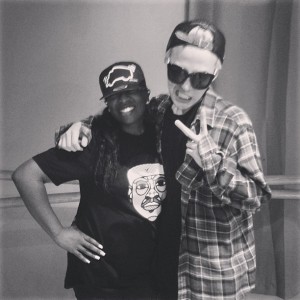 Breaking away from the endearing stories, we have G-Dragon and 2NE1 creating narratives of power through selcas. If Amber and Heechul beckon you closer to experience the life they lead, the legendary YG artists provide a peek into their life but from a considerable distance. G-Dragon has been through his era of endearing selcas but recently, his selcas have his signature all over them. This is not to be seen as a condemnation of G-Dragon but as an exploration of a different kind of narrative.
Breaking away from the endearing stories, we have G-Dragon and 2NE1 creating narratives of power through selcas. If Amber and Heechul beckon you closer to experience the life they lead, the legendary YG artists provide a peek into their life but from a considerable distance. G-Dragon has been through his era of endearing selcas but recently, his selcas have his signature all over them. This is not to be seen as a condemnation of G-Dragon but as an exploration of a different kind of narrative.
He uses the selca to map his growth as an artist. You have him clicking selcas with international artists without a hint of over-excitement or over-indulgence. He becomes a part of posh Los Angeles, includes himself in the space of Karl Lagerfeld without an air of subservience. He is his own master and creator and that bursts through his selcas with absolute ease. Posing as The G-Dragon, his selcas become a source of immense pride within the fandom.
[youtube https://www.youtube.com/watch?v=u9vNTLCRfic]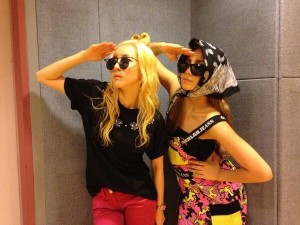 Most of 2NE1’s members do not click creative selcas rendering themselves only as pretty (but powerful) pictures, however, Sandara Park remains a delightful exception. While not exceptionally creative, she shows interesting glimpses of her personality keeping it more on the cute side. Her captions usually spell out the story for her audience but she also makes use of space to make her story tangible through the selca. Her selcas soften 2NE1’s power selcas as the audience feels somewhat equal to 2NE1 when they see Sandara busy in her antics, or busy showcasing her adorable sibling relationship with Thunder.
Most of 2NE1’s members do not click creative selcas rendering themselves only as pretty (but powerful) pictures, however, Sandara Park remains a delightful exception. While not exceptionally creative, she shows interesting glimpses of her personality keeping it more on the cute side. Her captions usually spell out the story for her audience but she also makes use of space to make her story tangible through the selca. Her selcas soften 2NE1’s power selcas as the audience feels somewhat equal to 2NE1 when they see Sandara busy in her antics, or busy showcasing her adorable sibling relationship with Thunder.
In all the above examples, the idols are continuously generating a narrative with the intention of creating a discourse, telling stories through space, property, body language and even image filters. However, self documentation does not mean self awareness. This is where fans come in and create a corrective discourse. The selca then ceases to be only a self-captured image. It becomes an image capturing faces, voices of approval and voices of dissent. Opinion flows through each selca, both the creator’s and the audience’s. Hence, the K-idol selca, in an attempt to bridge the fan-idol private-public gap, ends up creating a giant institution of definition and correction, of political action.
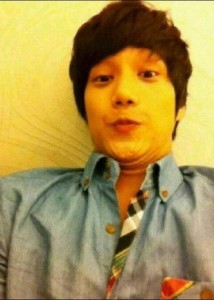 That the selca is political is not a random conclusion. The act of self-fashioning in this age of extended humanism, the novel concept of bridging the public and the private sphere, the accusations of narcissism, the threat of objectification with people succumbing to cleavage flashes and abs flashes to bask in the glory of ‘likes’, the danger of selling narrow-minded conception of beauty — the benefits and the harms of this selca culture are way too many, and these consequences of the innocent selca make it a political issue.
That the selca is political is not a random conclusion. The act of self-fashioning in this age of extended humanism, the novel concept of bridging the public and the private sphere, the accusations of narcissism, the threat of objectification with people succumbing to cleavage flashes and abs flashes to bask in the glory of ‘likes’, the danger of selling narrow-minded conception of beauty — the benefits and the harms of this selca culture are way too many, and these consequences of the innocent selca make it a political issue.
Stuck in this politically charged atmosphere of meaning-making, the selca as a political agent strikes back against the accusations hurled against it by giving birth to the ‘ugly’ selca. The ‘ugly’ selca serves the purpose of showing a comically ‘ugly’ side of a conventionally pretty person. The ugly selca, for all its laughter inducing nature, is actually a counter movement against objectification and desire for validation, as people play around with socially sanctioned ideas of prettiness.
[youtube https://www.youtube.com/watch?v=8OAqcSNV0ZA]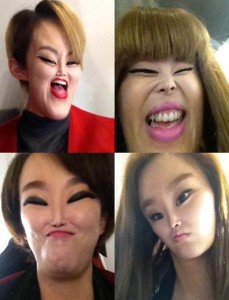 When K-idols, the mannequins of celestial perfection, resort to taking ugly selcas, not only does it dismantle ideas of beauty and perfection but brings fans much closer to the idols. This selca defines the idol as someone with a sense of humour, and also someone real, someone who also has ugly phases and feeds into eccentric teenage trends. It also reflects on what defines the culture of ugly, what kind of ‘ugliness’ leads to biting mockery and ridicule in real life and it seems that the double chin is the worst kind of ‘ugly’ conceived in human history as there exists even ‘video selcas’ showing the transition from the double-chinned ‘ugliness’ to v-lined ‘perfection’.
When K-idols, the mannequins of celestial perfection, resort to taking ugly selcas, not only does it dismantle ideas of beauty and perfection but brings fans much closer to the idols. This selca defines the idol as someone with a sense of humour, and also someone real, someone who also has ugly phases and feeds into eccentric teenage trends. It also reflects on what defines the culture of ugly, what kind of ‘ugliness’ leads to biting mockery and ridicule in real life and it seems that the double chin is the worst kind of ‘ugly’ conceived in human history as there exists even ‘video selcas’ showing the transition from the double-chinned ‘ugliness’ to v-lined ‘perfection’.
The selca hence, has smoothly transitioned from definition, redefinition to counter-definition, creating narratives and counter-narratives, authoring and re-authoring stories, appropriating symbols and deconstructing them within the confined corners of a single frame reemerging as a tool of potential political activism.
Pitch in your favourite K-idols selcas and (maybe) try to decode the story it conveys and political purpose it serves!
(Youtube [1] [2] New York Times [1] [2] Images via @IBGDRGN, @ajol_llama, @TheEllenShow , @kimheenim, @krungy21 )
